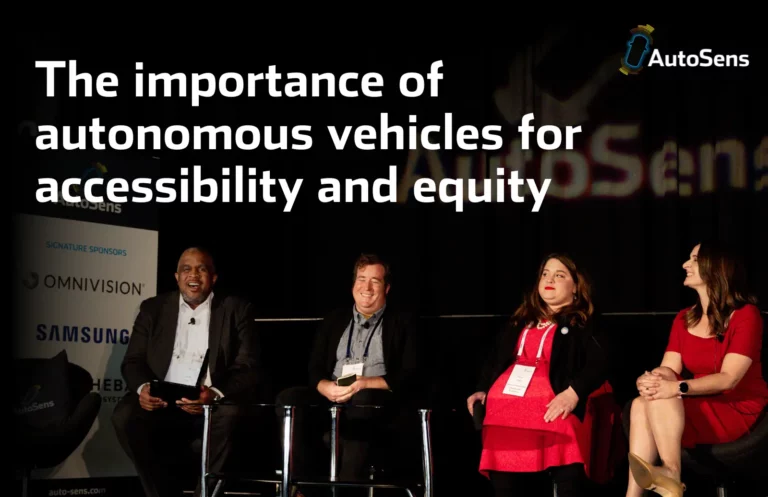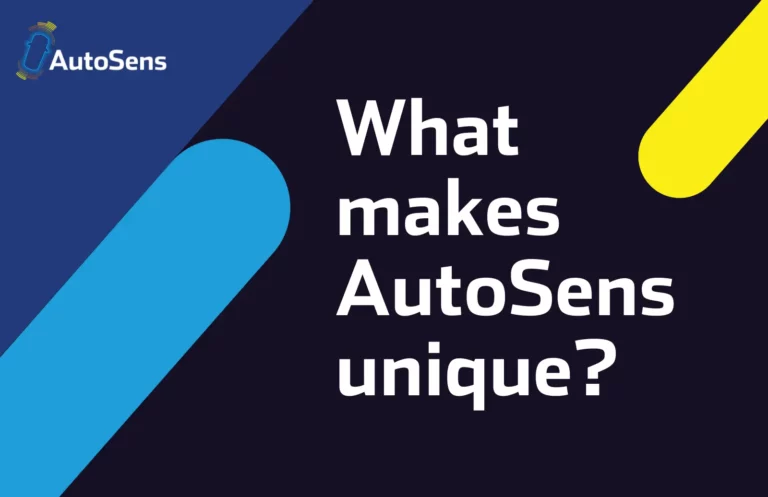
We talk to Matthieu Worm, Director of Autonomous Vehicles within the Simulation and Test Solutions Group at Siemens Digital Industries Software, our lead sponsor of AutoSens in Detroit. Matthieu shares with us his view on the acceleration of the industry and how Siemens are part of driving it, with particular focus on developing a model-based design process to remain competitive. Matthieu also talks to us about Siemens recent partnership with Arm, and what he is most looking forward to at AutoSens in May.
How would you describe what Siemens is doing in the industry?
Siemens is accelerating the development of autonomous vehicle technology with the world’s most comprehensive automotive and transportation software portfolio, which includes the complete value chain from integrated chip design and embedded systems, through virtual vehicle testing for safety and compliance, to manufacturing and deployment in smart-city environments. Leveraging Siemens Xcelerartor portfolio – which includes integrated software, services and an applications development platform — the automotive industry can simulate and test solutions for chips, electronics, controls, embedded software, sensors, vehicles and occupants within the context of the entire vehicle to ensure model reuse and traceability throughout the development process. At AutoSens in Detroit, we will demonstrate how our software and solutions can make a difference when it comes to massive virtual validation and verification of safety and comfort attributes, and the combination of virtual and physical testing. Additionally, Siemens Mobility will provide insights on the transition toward autonomous, connected, electric and shared mobility with our infrastructure solutions for Vehicle to Infrastructure communication and multi-modal mobility-as-a-service offerings. Together, we are working on pilot projects to put safe and comfortable self-driving vehicles on the road.
What do you see as the biggest market trends for 2020?
I think we will see a continued and even growing interest for off-the-shelf engineering tools and model-based engineering processes, specifically developed for autonomous vehicle technology. While we have seen massive investments by start-ups, higher tier suppliers, and OEMs to develop home-grown engineering platforms over the past 5-10 years, in the end the interest of the MaaS providers, AV-stack developers and OEMs is not to differentiate on tools and processes, but on the product that they put on the market. Instead of spending time on internal tools, the industry is turning toward the efficiency of relying on trustworthy, validated simulation and test environments that are continuously maintained and updated based on inputs from a large customer base. As a result, we expect the customer base we have to continue to grow due to our comprehensive portfolio of software and solutions, which will accelerate the development of autonomous vehicle technology.
How do you see simulation testing developing in the race towards level 5 technology?
The demands and effectiveness of simulation and testing is not just an environment in which you input a situation and ask the simulator to determine the outcome or collect sensor data. The true value comes from leveraging AI to develop the parameters and a large community of non-specialist engineers to make trustworthy judgements on the test results. For example, Siemens applies AI techniques to generate the critical test scenarios, including metrics for the assessment of safety performances and then automatically orchestrates thousands of simulation runs in cluster or cloud environments, and do post-processing for quick insights into the huge volume of results.
How does your concept of a ‘digital twin’ set Siemens apart from other simulation offerings?
At Siemens, there are three digital twins – product, production and performance— connected through the product lifecycle by a digital thread. At AutoSens in Detroit, we will focus on the digital twin of the product, for which we have the most comprehensive portfolio of solutions to simulate all aspects of the vehicle, from the silicon and chip level to how it will interact with the infrastructure of the city in which it operates. This includes simulating different product performances like durability, thermal, energy, electromagnetics, vehicle dynamics, sensing, etc. This all contributes to comfort and safety at the miniature scale of the chip, up to the level where cars become part of larger mobility fleets in city traffic and all within the context of the entire vehicle. However, within Siemens Xcelerator portfolio, we also have a suite of simulation solutions for designing the manufacturing plant and for predicting performance during the entire lifecycle of the products.
What do you think are the biggest challenges facing OEMs?
For the traditional OEMs, the biggest challenge is to remain relevant, which means not only adapting to and exploiting new technologies, but also reevaluating business models as the industry transitions toward autonomous, connected, electric and shared mobility. This is being driven by three main factors: 1) Cars are becoming computers and elements in a system of systems, and the core differentiator of a computer is the chip. 2) The vehicle of the future still needs to be safe, comfortable, efficient in use and manufactured according the highest quality standards. 3) The business model of selling cars to individuals is increasingly being replaced by mobility-as-a-service offerings. As a result, seemingly overnight, carmakers are becoming chipmakers, start-ups are challenging traditional industry leaders in market cap and mindshare, and tier one suppliers are investing as much in Big Data and software as they are in raw materials and manpower. Software is the key as automotive companies of today transform into a computer manufacturer that sells services. It is in that transition that Siemens brings long-lasting engineering and manufacturing experience at the level of the chip, the vehicle and the city, with digital twin technology at each level. We have the unique ability to design and test a digital twin of a highly complex automotive chip surrounded by virtual components in a virtual vehicle, which is navigating through a virtual city under physics-based environmental and traffic flow conditions, while driving continuity of data and processes across the entire supply chain.
Can a balance be achieved between comprehensive testing and competitive deployment in such a rapidly moving industry?
The key to achieving balance is to set up a model-based design process, in which a trustworthy digital twin of the vehicle and its sensors can be driven repeatedly through a trustworthy set of virtual test scenarios. Through artificial intelligence we can digest these recurring runs and identify the corner cases that represent the critical cases to be tested in HiL set-ups and finally on proving grounds. The test scenario database is continuously updated, driven by data collected in the field. In other words, implementing a closed loop vehicle development process, supporting over-the-air software updates of the vehicles on the road, will enable continuous improvement at a very high pace. It will be important to be conservative in the early releases, compromising on limited operational design domains for example, but with the right engineering process, quick progress can be made.
You recently partnered with Arm, what does the future look like for Siemens-Arm?
Earlier, I talked about how cars are becoming computers wheels and the chip is becoming a core differentiator. This is changing the way the automotive industry approaches chip design. Arm is a hugely innovative technology partner to silicon industry, and through this partnership we will bring their automotive IP within the Siemens PAVE360 digital twin environment to enable collaboration, and empower automakers and suppliers to develop and validate their chip designs within the context of the entire vehicle.
What are you most looking forward to at AutoSens in Detroit 2020?
I hope Autosens in Detroit will be as successful this year as it was last year, with a lot of interaction with customers and partners, discussing best practices in addressing the challenges the industry is currently facing. I expect we’ll be able to learn from companies that are leading the transition during the keynotes and presentations. From Siemens side you can expect insights in how we are bringing together the mechanical, electrical, electronics and software worlds into an integrated new mobility solution from chip to city to speed us toward the future of mobility.
Find out about our other exhibitors joining Siemens at AutoSens in Detroit this May. View sponsors and exhibitors >>






